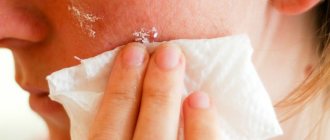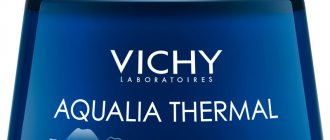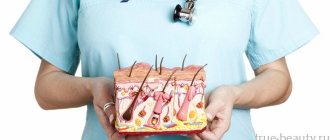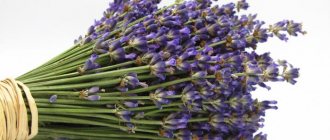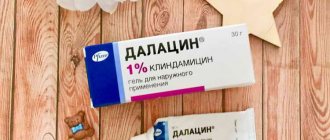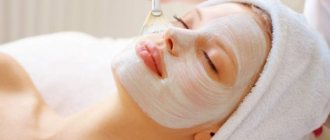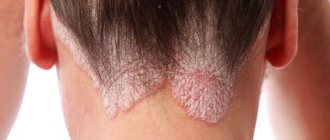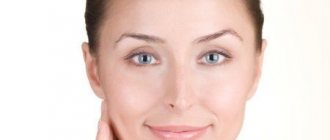Every day our skin is exposed to various factors that affect its condition. Street dust, sun rays, various microbes, bacteria, stress, as well as poor nutrition affect the health and complexion, causing hated pimples and rashes to appear. How to deal with this?
All standard methods of getting rid of acne/acne give short-term results. Masks, creams, lotions and facial cleansing have only an external effect, but they are undoubtedly worth using too. And to improve your skin, you will need complex treatment. After all, it needs nutritional properties from the inside in the form of vitamins obtained from foods, especially orange ones; it is this food that contains retinol, also known as vitamin A, which is considered one of the vital vitamins for humans and the most important vitamin for the beauty of the skin. The presence of this vital vitamin in the body allows you to forget about dryness on the face, fine wrinkles, sagging and sagging skin, as well as acne.
Signs of micronutrient deficiency
The skin reflects the state of the body. If the amount of nutrients is insufficient, the first signs appear:
- tired appearance;
- the dermis becomes gray;
- wrinkles appear;
- peeling and drying;
- presence of rashes;
- the skin looks faded;
- dark circles under the eyes.
One of these symptoms is a prerequisite to reconsider your diet and lifestyle.
Risk factors
Acne appears for certain reasons, but there are factors that are easy to foresee. They contribute to changes in the functions of the sebaceous glands.
These include:
- the last days of the menstrual cycle - during this period the release of male sex hormones increases;
- the predominance of fatty, spicy, sweet foods in food - they activate the sebaceous glands;
- climatic conditions - heat and humidity are the most favorable environment for the activation of skin bacteria;
- inappropriate skin care – incorrect selection of skin care products leads to increased oiliness or dryness, which is why acne breaks out;
- smoking and alcoholic drinks - the body simply cannot cope with the continuous flow of harmful substances from bad habits.
There are other factors, so without carefully determining the cause, you cannot begin to treat acne.
What foods make your skin worse?
Not every food is good for the body. Some foods have an aggressive effect on it, which affects the skin.
Excess fatty, spicy and sweet foods in the diet - such dishes activate the secretion of sebum
It is recommended to limit the consumption of the following products:
- Confectionery and flour products. May cause allergies. They contain many preservatives, flavors and dyes.
- Coffee. The drink not only invigorates you in the morning, but also produces the hormone cortisol. It can cause acne.
- Fried and fatty foods. It is not recommended to use more than 2 times a week. This food activates the sebaceous glands. The same applies to fatty dairy products.
- Nuts. In moderation, they are used to improve the skin. But when the norm is exceeded (over 100–150 g per day), the sebaceous glands become activated. They can also cause weight gain.
If your skin is far from ideal, these foods should be excluded from your diet.
The notorious cause of acne is free radicals.
Obviously, vitamin C for acne is very important, but why? It is the number one water-soluble antioxidant in the human diet.
Antioxidants are critical to stopping acne. They penetrate the sebum on the face and prevent the oxidation of the squalene component, because it is squalene peroxide that effectively blocks pores.
This is why ascorbic acid can effectively treat acne. It is the primary electron donor against free radicals, the primary method by which antioxidants deactivate free radicals.
It also increases the overall flow of electron reduction to free radicals and protects many different oxidized tissues such as proteins as well as some lipids, despite the fact that they are not even fat soluble.
Ascorbic acid does not protect sebum from oxidation because this work is related to fat-soluble antioxidants such as vitamin E. However, it can prevent acne in another way.
The more vitamin C you have in your blood, the less free radicals deplete the antioxidants that protect your body from blocked pores, namely vitamins E and A.
In addition, it indirectly prevents blocked pores and blackheads as it penetrates into the epidermal tissue. A large amount of vitamin C cuts off the chains of free radicals before they spread through the tissues and reach the sebum.
There is some evidence that megadoses of vitamin C in the skin directly control the release of pro-inflammatory chemicals responsible for acne, such as interleukin-6 and interkine-1beta.
A megadose of vitamin C in the epidermis also protects against acne inflammation when exposed to ultraviolet rays in the sun. This vitamin is not a true sunscreen because, unlike vitamin A, it does not directly protect cells from ultraviolet light.
But it can effectively fight acne by absorbing large amounts of free radicals.
So, let's give some obvious facts proven by research results.
First , topical application of ascorbic acid (the main component of vitamin C and its most commonly used form) significantly reduces damage from ultraviolet rays.
Secondly , adding ascorbic acid to the diet significantly reduces the formation of tumors and skin growths caused by UV light.
Third , it is well known that vitamin C transporter protein levels increase in the skin upon exposure to sunlight, suggesting that it is an automatic response to ultraviolet light inflammation. However, if you have a vitamin C deficiency, then this automatic protection does not work.
What is your skin missing?
Our body needs many useful substances. What vitamins help with acne? The most useful are 5 components:
If there is a lack of certain essential vitamins in the body, the skin may suffer greatly.
- Vitamin A for the face (retinol). If there is insufficient amount of it, the skin looks pale and dry, and peeling occurs. Retinol accelerates cell division, restores skin, increasing its elasticity. Vitamin A for acne normalizes metabolic processes. The best absorption of retinol occurs in combination with fats. Its high content is in carrots, cabbage and butter.
- Vitamin C (ascorbic acid). Increases the body's protective properties. Shine appears, the structure of the skin improves, and regenerative processes accelerate. Ascorbic acid eliminates slagging in the body and relieves redness. A large amount of ascorbic acid is found in lemon, currants, garlic, and kiwi.
- Water-soluble compounds of group B. Normalize metabolic processes and the functioning of skin glands. Vitamins from this group for acne and acne are often used in decorative cosmetics. Contained in bananas, beef, sour cream, nuts, liver.
- Vitamin E for acne. Slows down the process of skin aging and prevents the appearance of wrinkles. Increases immunity, ensures elasticity and beautiful appearance of the skin. Contained in olives, peanuts, sunflower oil, oatmeal.
- Vitamin D: Considered one of the best compounds to fight breakouts on the body. If there is insufficient amount of it, rickets develops and rashes intensify. Therefore, in summer the skin looks cleaner. Contained in dairy products, fish oil, chicken eggs and ultraviolet radiation.
Sometimes, only replenishing the deficiency of a certain vitamin in the body helps to completely get rid of acne.
Vitamins against acne on the face are supplemented with zinc. It dries out acne and has an antibacterial effect.
What vitamins to take depending on your skin type:
- Fat. Retinol is considered the best option. It reduces the secretion of sebum, eliminating the main factor of rashes - clogged pores. Compounds of groups E, B, D, C are useful.
- Compounds from group E, PP, and hyaluron will help avoid drying and flaking of the skin. They smooth out wrinkles and prevent the appearance of acne on the skin of the face.
Your doctor will help you choose anti-acne complexes.
Vitamin A
The condition of skin cells depends on the quantity in which it enters the body. With its deficiency, the skin of the face looks tired, sluggish, and has a lot of redness and irritation. In addition, she ages faster. If retinol enters the body in normal quantities, then the skin of the face has a healthy, fresh appearance, it is not bothered by wrinkles or various rashes.
What is he doing. Increases skin firmness and elasticity, eliminates acne and age spots, prevents early aging of facial skin, moisturizes it, protects from the harmful effects of weather conditions, improves facial texture, and renews skin cells .
Instructions for use
How to properly use facial vitamins for acne:
- The complex and individual compounds cannot be used. An overdose can make the situation worse.
- If there is no positive result, the course should be replaced.
- After a month's course of treatment, take a break for 1–2 months.
- Depending on the patient, the doctor determines the course of therapy.
In order to quickly remove acne, you need to use vitamins of groups A, B, C, E.
The best effect is achieved when combined with cosmetics and a balanced diet.
The complexes ensure the supply of useful substances to the body through the blood. Individual compounds help restore the supply of a specific nutrient. After completing the diagnosis, the doctor can recommend which vitamins for facial acne should be purchased at the pharmacy first. With food, nutrients and microelements enter the body. Proper nutrition will help eliminate acne and pimples.
Zinc
Acne can also be caused by a lack of zinc in the body.
What is he doing. Helps the body absorb vitamin A, protects the skin from bacteria and sun rays, eliminates pimples, stimulates the regeneration of skin cells, and reduces keratin levels .
| Vitamin | What products contain |
| A | carrots, liver, spinach, persimmon, pumpkin, sea buckthorn, fish oil, whole milk, butter. |
| IN 1 | buckwheat, cabbage, pork entrails, dried fruits, nuts, beans, potatoes. |
| AT 2 | legumes, apricots, bell peppers, tomatoes. |
| AT 3 | chicken eggs, sorrel, dates, beef, corn flour, parsley. |
| AT 5 | mushrooms, liver, green peas, dark turkey meat, cauliflower, wheat bran. |
| AT 6 | peaches, potatoes, fish, meat, cabbage, cherries, leafy vegetables, bananas, strawberries. |
| AT 9 | liver, cabbage, kidneys, buckwheat, beets, cheese, millet, carrots, egg yolk. |
| AT 12 | beef, poultry, pork. |
| WITH | oranges, rose hips, cod liver, black currants, cabbage, juniper, bell pepper, lemon, parsley. |
| E | almonds, sea buckthorn, broccoli, walnuts, rowan, sunflower oil, rose hips. |
| Zinc | peanuts, sunflower seeds, wheat sprouts, cheese, chicken heart. |
Recommendations and contraindications
The doctor prescribes special complexes after receiving test results. They allow you to understand what substance or microelement the body lacks. Often such complexes are prescribed for prevention and to increase the body’s protective properties.
Contraindications:
- allergy;
- pregnancy;
- lactation;
- age;
- chronic diseases.
Before starting treatment with any of the drugs presented, it is advisable to consult with your doctor.
Discuss the choice of drug if there is one of the contraindications with your doctor.
In this material we will go over the B vitamins.
So, remember the first term: hypervitaminosis is a condition of the body in which intoxication (poisoning) occurs with an ultra-high dosage of one or even several vitamins at once. It doesn’t matter at all which part of this megadose is taken from a vitamin complex, and which part from food - the result will be the same.
Most negative symptoms (yes, oily skin, acne and pimples included) will begin to appear even before the development of full-fledged hypervitaminosis, so to speak, while still on the way. And only the most dangerous and acute ones will come after actually increasing the serious dose of vitamins.
This is a collective name, because In nature, this group of vitamins almost always exists together. Again, together they perform their main task in the body - this is participation in energy production and tissue respiration.
B1 (Thiamin), B2 (Riboflavin), B3 (Nicotinic acid), B4 (Choline), B5 (Pantothenic acid), B6 (Pyridoxine), B7 (Biotin), B8 (Inositol), B9 (Folic acid), B10 ( Para-aminobenzoic acid), B11 (Levocarnitine), B12 (Cyanocobalamin).
This combat group can do a lot, here is not a complete list of conditions and diseases for which B vitamins are prescribed:
- Depression
- Anxiety
- Insomnia
- Strengthening the immune system
- Flu and acute viral diseases
- Alcoholism
- Anemia
- Obesity
- Aphthous stomatitis
- Improving vision functions
- Stones in the kidneys
- Cardiomyopathy and congestive heart failure
- Acute pharyngitis
- Chronic fatigue syndrome
- Strengthening the nervous system
- Attention disorders and/or hyperactivity
- Migraine
- Tension headaches
- Multiple sclerosis
- Strengthening the cardiovascular system
- Diabetes
- Hypoglycemia
- Hypothyroidism
- Bronchitis and pneumonia
- Sinusitis
- Otitis
- Hepatitis
- Osteoporosis
- Improved skin health
- Rosacea
- Seborrheic dermatitis
- Impotence
In cases of severe mental and physical stress, infectious diseases, and stressful conditions, vitamins from this group come to the rescue. It is quite natural that they are included in any decent vitamin complex, and are also sold as separate ingredients in the pharmacy.
Liver, meat, dairy products, eggs, fish, bread, peas, nuts, brewer's yeast, legumes, rice, cheese - as you can see, not even a complete list of foods with a relatively high content of B vitamins is quite large and is included in the diet of each of them. us.
And so we came to a new term - medicinal acne (acne medicamentosa).
For the purposes of this article, we are interested in only one type of it - doping (bodybuilding) acne, which occurs when using anabolic agents and B vitamins.
The best drugs
Vitamins for acne on the face, reviews of which are most positive:
- "VitAE", "Aevit", "Vitaminel". Can be purchased at a pharmacy. They contain compounds of groups A and E. They provide rapid regeneration and elimination of rashes. Accelerates the treatment of gastrointestinal diseases. Prescribe 1-2 tablets 2 to 3 times a day or 1 tablet per day. The course of therapy is 14–30 days. After 3–6 months of withdrawal from the drug, if indicated, the course can be resumed.
- "Zinc Chelate", "Zincteral". The preparations contain zinc, which accelerates wound healing and eliminates acne. Prescribed for brittle hair and poor skin condition. Dosage regimen: 1 hour after eating food or before it (2-3 hours). For adults, dosage is 1-2 tablets 3 times in 24 hours. Then it is reduced to 1 dose of tablets twice in 24 hours. The course of treatment is from 3 weeks to 2 months.
- Ascorbic acid (dragees), Asvitol, Citravit. Prescribe 1 tablet after meals. Daily dosage 50–100 mg.
- "Aerovit", "Vetoron", "Pentovit". Prevents the appearance of acne and acne, peeling and drying. Prescribe from 2 to 4 tablets 3 times in 24 hours. The course of therapy is selected individually, but not less than 21 days.
The assortment of pharmacies is rich in a variety of vitamin complexes sold in the form of tablets or capsules
Before taking acne medications, it is recommended to study their instructions. Thoughtless use is contraindicated. To avoid encountering a counterfeit, carefully read the title and the name of the manufacturer. Make sure the product is not expired.
Vitamin C clears acne skin
It has never been a popular supplement among acne patients. But look at the data from one study.
Scientists collected 60 women aged 16–22 years and divided them into 4 groups:
1) obesity with acne,
2) obesity without acne,
3) normal weight with acne,
4) normal weight with normal skin.
The blood levels of beta-carotene, vitamin E, A and C were measured. The results are very interesting: patients with acne have on average 40% less vitamin C in their blood than patients with clear skin.
This is an indication that acne patients clearly lack ascorbic acid. Even overweight people who eat a lot do not get all the nutrients they need from food.
For example, in America, 31% of people are deficient in vitamin C, and those with acne are at an even higher risk according to the study above.
Acne from dietary supplements and steroids
Dietary supplements are used for acne throughout the body. The most commonly used are probiotics, sorbents and enzymes for oral administration.
Helps eliminate skin problems:
- "Bifiform". Restores intestinal microflora.
- "Lactobacterin". Normalizes bacterial balance in the body.
- Activated carbon. It is a cheap sorbent.
- "Lactofiltrum". Stimulates the body's protective properties. It is considered a sorbent.
The products eliminate rashes if their cause is a disruption of the gastrointestinal tract, allergies, or slagging in the body. The appearance of a rash from these drugs is possible due to individual intolerance. In most cases, they help improve the condition of the skin.
Has good reviews on the treatment of acne in complex therapy
But steroids can cause acne. The skin destroys androgenic hormones if their amount is small. When exogenous steroids are used, their concentration exceeds the permissible level. It is difficult for the skin to cope with such a load. This creates favorable conditions for the growth of bacteria. If we add to this the increased activity of the sebaceous glands, the situation becomes even worse.
Causes of acne
Acne is a dermatological disease that develops as a result of impaired functionality of the sebaceous glands. Excessive sebum production causes blockages in the pores, resulting in pimples on the skin.
As a rule, the development of this kind of pathology is facilitated by the presence of internal and external causes. Internal reasons include:
- disturbances in the gastrointestinal tract;
- immune system dysfunction;
- hormonal imbalances;
- exposure to frequent stress, emotional stress, nervous breakdowns;
- lack of vitamins in the body;
- abuse of fatty and fried foods;
- presence of bad habits.
External causes of acne:
- excessive use of cosmetics;
- squeezing pimples;
- failure to comply with hygiene procedures or, conversely, excessive use of detergents;
- unfavorable climatic conditions.
The use of vitamin complexes is effective in the fight against acne.
"Aevit" in the fight against acne
Aevit is effective for rashes due to its composition. It contains retinol and tocopherol. They ensure the following result:
- skin regeneration;
- increasing immunity;
- rejuvenation.
Aevit for acne can be used externally without consulting a doctor. When administered intramuscularly or orally, due to the high concentration of beneficial substances, it is advisable to consult a specialist. Take the drug once a day. The course of treatment is 21 days.
Aevit is a complex preparation containing vitamins A and E
Signs of overdose:
- diarrhea;
- drowsiness;
- nausea;
- a rash appears on the body;
- inhibited reaction.
If one of the signs is present, the dosage of the drug should be reduced or even abandoned. If you use Aevit externally for acne, there are practically no contraindications. Possible allergies. The drug can be applied to any type of skin. The capsule is opened and applied to the face area in pure form or as part of masks. If you decide to use Aevit for acne externally, the skin must first be cleansed and scrubbed. The area of ulcers is not cleaned. Lightly tap the fingertips and rub the product into the affected areas. Rubbing is prohibited. The drug has good absorption. This massage is repeated 15 times a day, then a break is taken for 3 months.
Aevit against acne can be used as masks:
To eliminate acne, it is recommended to use vitamin Aevit in masks
- Boil the potatoes, peel them. Crush until mushy, add the Aevita capsule and stir. When warm, spread the mass over the face for 15–20 minutes. Rinse off with clean water. The course of treatment is 7 days. The procedure is carried out daily.
- Masks with added clay are effective against comedones. White clay is diluted with water, egg white, a small amount of honey and Aevit are added. Apply to the affected area. The result is noticeable after 21–30 days.
- To eliminate acne and moisturize dry skin, a mask based on a nourishing cream is suitable. Add aloe juice and Aevit to it. The mixture is applied in a thick layer for 10 minutes. Then remove the remaining mask with a damp cloth.
Contraindications:
- Excessive sensitivity to components.
- Injections are allowed after 14 years of age.
Following the recommendations will help avoid unwanted consequences.
Dietary Sources of Vitamin C
Nowadays, the main treatment for acne is to follow a proper diet. Even with chronic stress, increasing vitamin C intake is a top priority in treatment.
It is necessary to eat a wide variety of plant foods. In nature, vitamin C can almost always be found in fruits and vegetables with the exception of some seafood like crab, oysters and salmon.
Berries, apples, bananas and citrus fruits are good sources. Berries are more accessible: strawberries, raspberries, blackberries, blueberries, blueberries, cranberries.
Remember that organic berries usually contain significantly more vitamins and antioxidants.
In addition, the berries are virtually free of pesticides, many of which exhibit strong inflammatory and hormonal disrupting effects that cause acne.
Cruciferous vegetables such as broccoli are an even better source of vitamin C than strawberries, as are spinach, cauliflower, Brussels sprouts and kale.
However, you must remember that the vitamin content of vegetables can be reduced if improperly prepared. It is known that boiling destroys vitamin C and all nutrients are released into the water, which we then drain.
The best way to prepare vegetables while preserving all the vitamins is to steam them.
Potatoes contain a decent dose of vitamin C. For example, a regular 400 gram serving of fried potatoes contains 128% of the daily value of the vitamin. 100 g of orange contains 88%, 100 g of clementine - 81%, and 100 g of tangerines - approximately 50%.
General rules of therapy
For successful treatment of acne in young men, it is important to adhere to two rules:
- Treatment should be systematic, daily.
- Be sure to follow the entire set of appointments without missing anything.
The initial stage of treatment involves changing the young man’s lifestyle. First of all, it is important to correct existing nutritional errors. If a boy takes protein powders or steroids for sports, they should be avoided. Butter, lard, fatty and smoked foods, and marinades should be completely excluded from the diet. Every day the menu should contain fermented milk products - kefir, cottage cheese, yogurt. Fresh vegetables and fruits, lean meats and fish, cereals, vegetable oil (no more than 10 grams per day) are useful.
To strengthen the nervous system and increase stress resistance, nightly “meetings” in front of a computer monitor should be replaced with a walk in the fresh air.
A young man needs to sleep at least 8 hours. During periods of preparation for competitions and exams, the boy should be given herbal sedatives once a day (in the evening before bed).
The approach to hygiene should also be reconsidered. You should not wash your face with hot water, nor should you frequently wash your face with soap. You should use warm and cool water to wash your face. After the procedure, blot the face with a soft towel without rubbing the skin. Young men who have started shaving should ensure that shaving products are thoroughly washed off the skin.
A rash on your back and shoulders is a reason to change your wardrobe. A young man with problem skin should wear only T-shirts made from natural materials. If you sweat excessively, it makes sense to take a shower several times a day, whenever possible, without detergents. A young man who wants to get rid of acne should start taking multivitamin complexes that contain vitamin A and Omega-3 polyunsaturated acid .
READ ALSO: Hemorrhagic rash - what is it, photos, causes of appearance in adults, treatment
Other methods
Modern cosmetology offers many methods for getting rid of acne. They can be resorted to if conservative treatment is unsuccessful or the depth of skin damage is so great that there is a risk of the formation of skin cosmetic defects. Usually, the dermatologist, without delaying matters, himself recommends using one of the alternative methods. The easiest way is hardware or instrumental treatment of acne. They are thoroughly cleaned in the clinic, the acne “leg” is removed, after which the pores are treated with an anti-inflammatory composition and recommendations for care are given.
Sometimes there is a need for surgery. If a guy has cysts, deep skin defects left behind by large ulcers, he undergoes a simple operation to excise the scars and apply skin “patches” to these places. There is another way that allows you to cope with severe acne that is resistant to ointments - injecting hormonal drugs into the acne using a small syringe with a very thin needle.
Good results are shown by auxiliary procedures - phototherapy (irradiation with artificial UV rays), as well as cryotherapy (cauterization of acne with extremely low temperatures).
According to reviews, ultrasonic facial cleansing is considered the most popular method of getting rid of acne; laser skin cleansing also has quite positive reviews. Almost any cosmetology clinic today can offer these and many other ways to help with acne in a teenager. After one of the alternative methods is used, the boy will be prescribed a subsequent standard course of therapy, which will include nutritional correction, treatment of the skin with ointments, and, possibly, taking some medications orally.
READ ALSO: A rash appeared on the thighs: causes, symptoms, treatment, photos | My legs
